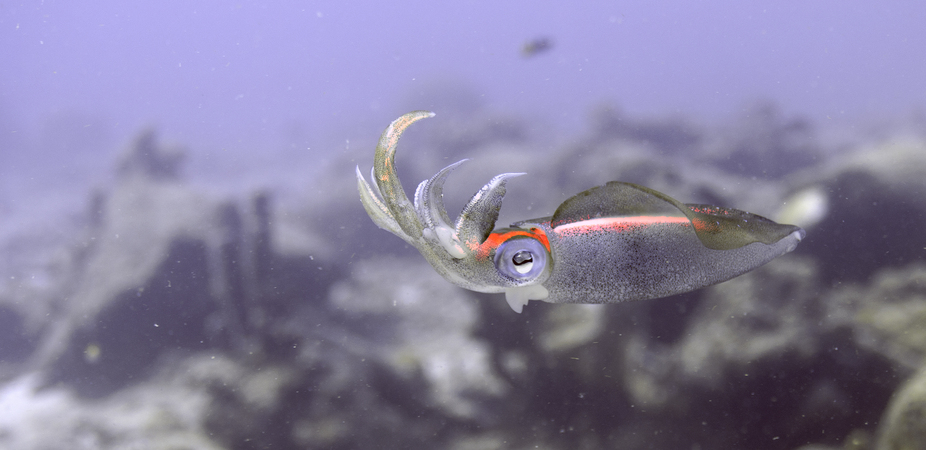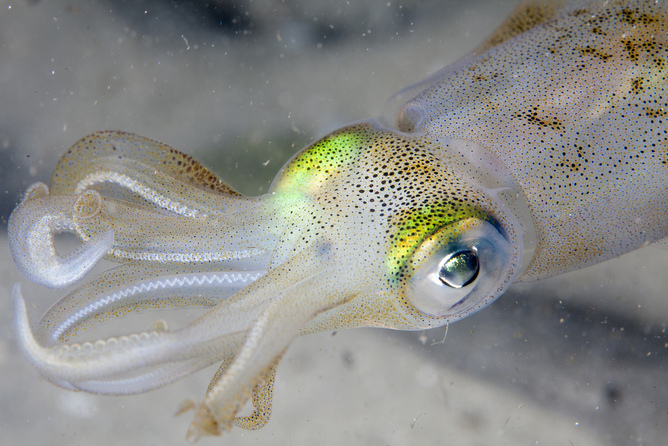
Humans and Squid Evolved Same Eyes Using Same Genes

This article was originally published at The Conversation. The publication contributed the article to Live Science's Expert Voices: Op-Ed & Insights.
Eyes and wings are among the most stunning innovations evolution has created. Remarkably these features have evolved multiple times in different lineages of animals. For instance, the avian ancestors of birds and the mammalian ancestors of bats both evolved wings independently, in an example of convergent evolution. The same happened for the eyes of squid and humans. Exactly how such convergent evolution arises is not always clear.
In a new study, published in Nature Scientific Reports, researchers have found that, despite belonging to completely different lineages, humans and squid evolved through tweaks to the same gene.
Eyes are the prize
Like all organs, the eye is the product of many genes working together. The majority of those genes provide information about how to make part of the eye. For example, one gene provides information to construct a light-sensitive pigment. Another gene provides information to make a lens.
Most of the genes involved in making the eye read like a parts list – this gene makes this, and that gene makes that. But some genes orchestrate the construction of the eye. Rather than providing instructions to make an eye part, these genes provide information about where and when parts need to be constructed and assembled. In keeping with their role in controlling the process of eye formation, these genes are called “master control genes”.
The most important of master control genes implicated in making eyes is called Pax6. The ancestral Pax6 gene probably orchestrated the formation of a very simple eye – merely a collection of light-sensing cells working together to inform a primitive organism of when it was out in the open versus in the dark, or in the shade.
Today the legacy of that early Pax6 gene lives on in an incredible diversity of organisms, from birds and bees, to shellfish and whales, from squid to you and me. This means the Pax6 gene predates the evolutionary diversification of these lineages – during the Cambrian period, some 500m years ago.
The Pax6 gene now directs the formation of an amazing diversity of eye types. Beyond the simple eye, it is responsible for insects' compound eye, which uses a group of many light-sensing parts to construct a full image. It is also responsible for the type of eye we share with our vertebrate kin: camera eye, an enclosed structure with its iris and lens, liquid interior, and image-sensing retina.
In order to create such an elaborate structure, the activities Pax6 controlled became more complex. To accommodate this, evolution increased the number of instructions that arose from a single Pax6 gene.

Making the cut
Like all genes, the Pax6 gene is an instruction written in DNA code. In order for the code to work, the DNA needs to be read and then copied into a different kind of code. The other code is called RNA.
RNA code is interesting in that it can be edited. One kind of editing, called splicing, removes a piece from the middle of the code, and stitches the two ends together. The marvel of splicing is that it can be used to produce two different kinds of instructions from the same piece of RNA code. RNA made from the Pax6 can be spliced in just such a manner. As a consequence, two different kinds of instructions can be generated from the same Pax6 RNA.
In the new study, Atsushi Ogura at the Nagahama Institute of Bio-Science and Technology and colleagues found that Pax6 RNA splicing has been used to create a camera eye in a surprising lineage. It occurs in the lineage that includes squid, cuttlefish, and octopus – the cephalopods.
Cephalopods have a camera eye with the same features as the vertebrate camera eye. Importantly, the cephalopod camera eye arose completely independently from ours. The last common ancestor of cephalopods and vertebrates existed more than 500m years ago.
Pax6 RNA splicing in cepahlopods is a wonderful demonstration of how evolution fashions equivalent solutions via entirely different routes. Using analogous structures, evolution can provide remarkable innovations.
Malcolm Campbell receives funding from the Natural Sciences and Engineering Research Council of Canada, and from Genome Canada.
This article was originally published on The Conversation. Read the original article. Follow all of the Expert Voices issues and debates — and become part of the discussion — on Facebook, Twitter and Google +. The views expressed are those of the author and do not necessarily reflect the views of the publisher. This version of the article was originally published on Live Science.
Sign up for the Live Science daily newsletter now
Get the world’s most fascinating discoveries delivered straight to your inbox.










